Independence Palace is a historical monument in the heart of Ho Chi Minh City, Vietnam.
This majestic Palace has a significant role in Vietnamese history, having served as the presidential Palace of South Vietnam during the Vietnam War and witnessing the fall of Saigon, which signaled the end of the war and the country’s reunification.
In this article, we will walk you through the history of Independence Palace, emphasizing its importance in Vietnamese history and the events it witnessed.
We will also include a thorough visitor guide, including what to expect when visiting, travel recommendations, and a summary of the Palace’s today functions.
So sit back, relax, and let us take you on a tour of this historic monument in Vietnam.
See more: Unveiling Saigon’s Hidden Treasures through an Exciting Adventure
Contents
History of Independence Palace
Independence Palace, also known as the Reunification Palace, has a long and complicated history that depicts Vietnam’s path through colonialism, war, and political upheaval.
Ngo Viet Thu, a Vietnamese architect, designed the Palace, which was finished in 1966. The purpose of the building was to serve as the official residence and workspace of the President of South Vietnam and his staff.
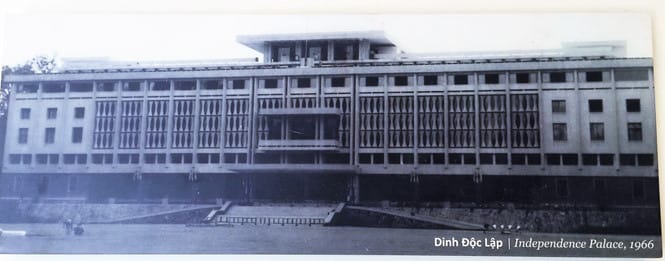
The Palace’s architecture is unique in combining traditional Vietnamese design features with modernist touches, representing the country’s efforts to integrate tradition and modernity in the 1960s.
However, not many people know that before Independence Palace was built, the site was home to the Norodom Palace, which was built in 1868 and served as the residence of the French governor-general of Indochina.
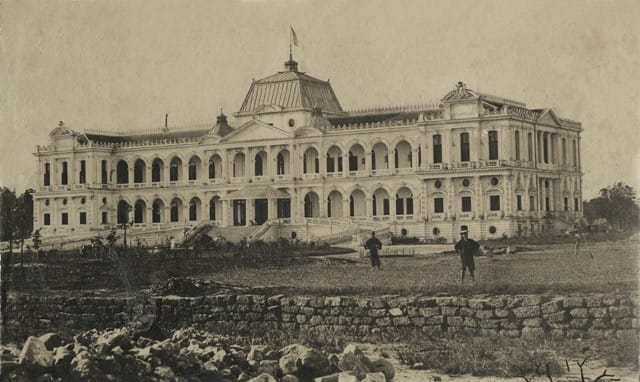
The Norodom Palace was heavily damaged during World War II and was later rebuilt, but it was eventually destroyed in a bombing during the Vietnam War.
Independence Palace witnessed several key events in Vietnamese history during its tenure as the presidential Palace, including the Vietnam War and the fall of Saigon.
The Palace was attacked by North Vietnamese forces during the Tet Offensive in 1968. Still, it was swiftly reconstructed and continued to serve as the presidential residence until the fall of Saigon in 1975.
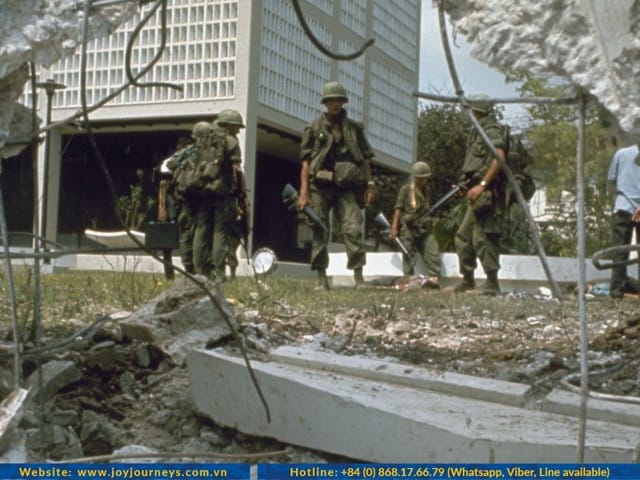
North Vietnamese tanks broke through the palace gates on April 30, 1975, signaling the end of the Vietnam War and the country’s reunification. The Palace was renamed the Reunification Palace to commemorate this historic event.
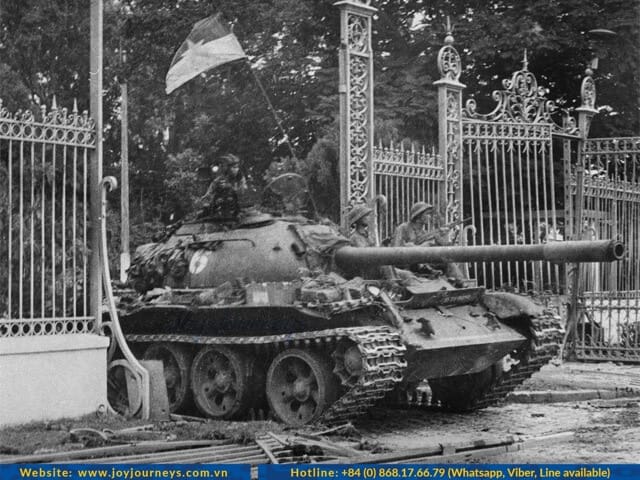
“The Independence Palace” was originally chosen to symbolize South Vietnam’s independence from French colonial rule. Now serving as a museum, visitors can learn about Vietnam’s history and culture through its distinctive architecture, lush gardens, and historical significance, making it a must-see for all Ho Chi Minh City visitors.
The collection of art, furniture, and artifacts in the presidential Palace has been kept to replicate the original architecture and arrangement, allowing visitors to experience the majesty and luxury of the presidential Palace during its time.
Get Ready for an Adventurous Journey on the Majestic Saigon River.
From The Residential Palace of South Vietnam to A Historical Site and Tourist Attraction
The Palace today’s roles
Nowadays, Independence Palace is a prominent historical landmark and tourist destination in Vietnam, providing tourists with a glimpse into the country’s rich cultural legacy and history.
The exhibitions and collections at the Palace highlight its original purpose as South Vietnam’s presidential residence and its role in shaping the country’s modern history.
Displays and collections at the Palace include a wide range of Vietnam War relics, such as military vehicles, weapons, and communications technology.
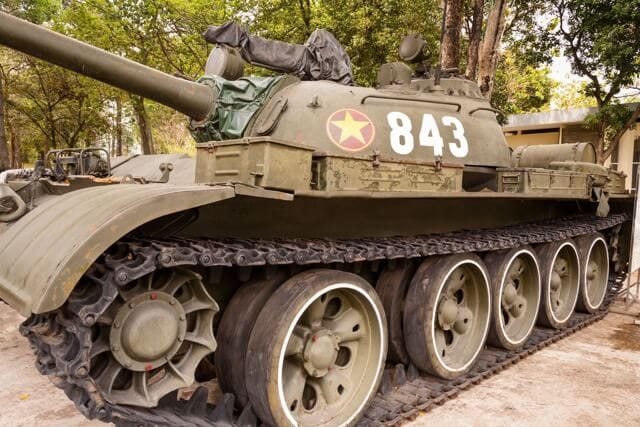
Visitors are welcome to view the underground bunker and communication rooms the South Vietnamese government used during the conflict.
In addition to Vietnam War displays, the Palace’s collection includes art, furniture, and treasures that show the wealth and majesty of the presidential Palace at the time.
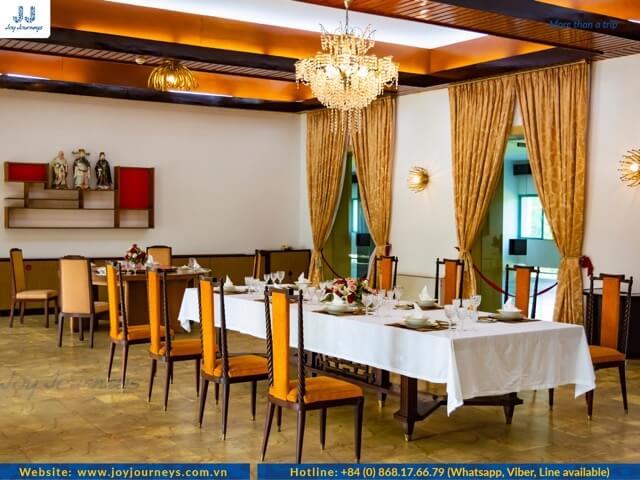
Hours of operation and ticket price
Tickets to Independence Palace can be purchased at the entrance gate, with pricing depending on the ticket type and the visitor’s age. General admission, guided tours, and special exhibitions are among the ticket choices available to visitors.
Visitors can visit Independence Palace from 8:00 a.m. to 3:30 p.m., with the historical relic area open during these hours. The exhibit “From Norodom Palace to Independence Palace 1868-1966” opens from 8:30 a.m. to 4:30 p.m.
General admission tickets are priced at 65,000 VND/person (approximately 2.81 USD) for adults, 45,000 VND/person (approximately 1.95 USD) for Vietnamese university students, and 15,000 VND/person (approximately 0.65 USD) for children.
Alternatively, adults and students can pay 40,000 VND/person (approximately 1.73 USD) for palace admission, while Vietnamese university students pay 20,000 VND/person (approximately 0.87 USD) and children pay 10,000 VND/person (approximately 0.43 USD).
You can find the latest information on the official website of Independence Palace. Here
Location And How To Get There
The Palace is located at 135 Nam Ky Khoi Nghia Street, Ben Thanh Ward, District 1, Ho Chi Minh City. Since Independence Palace sits in the city’s center, it is easily accessible by public transit or other methods. Visitors can get to the Palace by taxi, bus, or motorbike or walk if they are staying nearby.
The central location of the Palace also makes it an excellent starting point for exploring other adjacent sights, such as the Ben Thanh Market and the War Remnants Museum.
Independence Palace is critical in maintaining Vietnam’s rich cultural heritage and history.
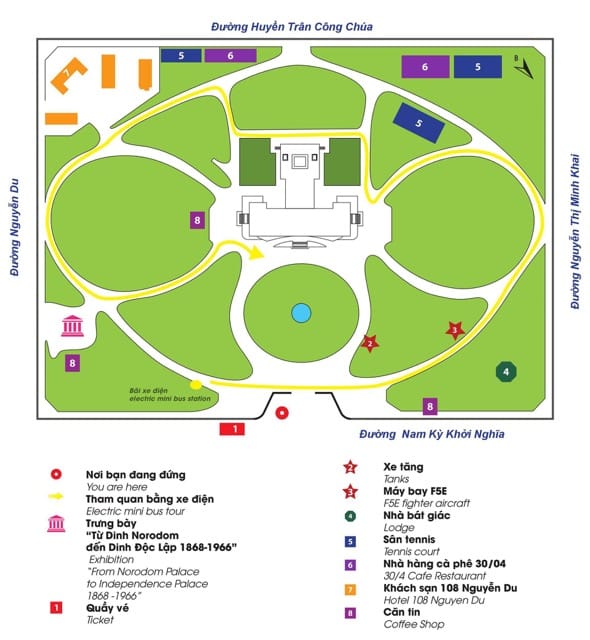
Discovering Independence Palace in Saigon: What to Expect from Your Visit
Discovering Independence Palace in Saigon is a once-in-a-lifetime opportunity to learn about Vietnam’s rich cultural heritage and history. What you may expect from your visit is as follows.

Historical Relic
The Presidential Palace’s historical relic portion allows visitors to experience the Presidential Palace’s original architecture and interior design, which mix traditional Vietnamese architectural features with modernist touches.
Visitors can walk around the halls and apartments of the Palace, which have been restored in their original style and arrangement. You can enjoy the presidential Palace’s magnificence and opulence during its period.
Unveiling Saigon Accommodation: Your Complete Guide from Budget to Comfort
Communication Rooms and an Underground Bunker
During the Vietnam War, the South Vietnamese government used the underground bunker and communication rooms of the Palace. Visitors can explore these rooms and view the equipment and technology used during the conflict. You can learn about the war’s plans and tactics and better grasp Vietnam’s history.
Items from the Vietnam War
Exhibits and collections at the Palace include various Vietnam War relics, such as military vehicles, weapons, and communications technology. Visitors can closely look at these artifacts and learn about their significance throughout the battle.
The Exhibit “From Norodom Palace to Independence Palace 1868-1966”
This display educates visitors on the history of the Independence Palace’s location. The Norodom Palace, which stood on the site earlier, was built in 1868 as the residence of the French governor-general of Indochina. The exhibition explains the narrative of the Palace’s construction and its impact on Vietnamese history.
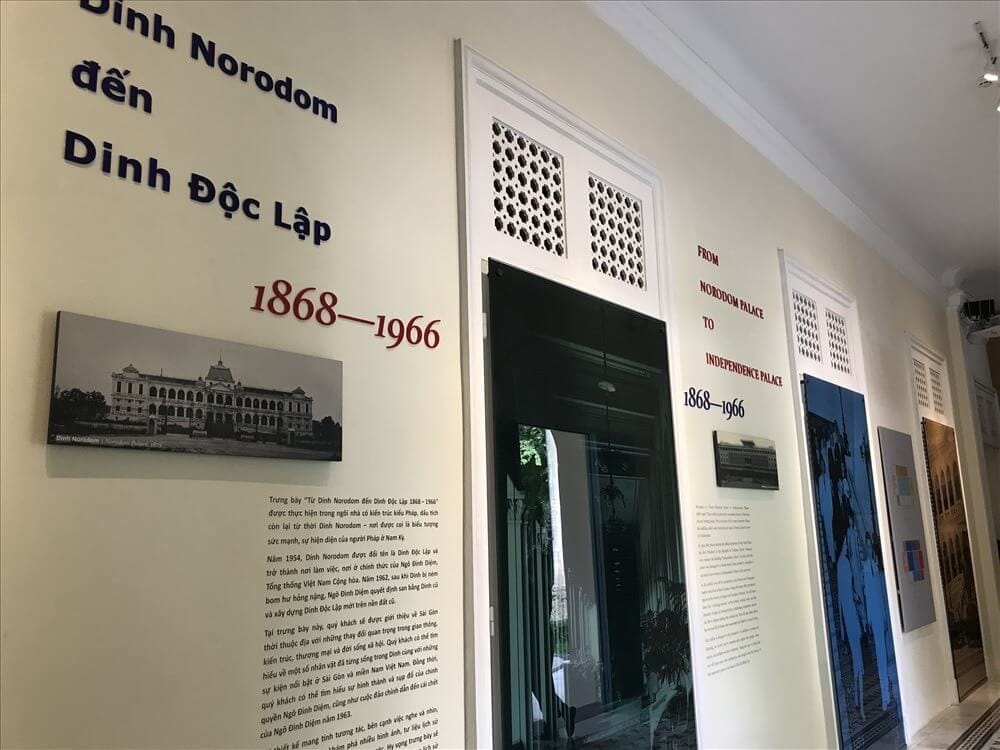
Tips for Visitors
Below are some tips that we would like to share with visitors before visiting the Palace.
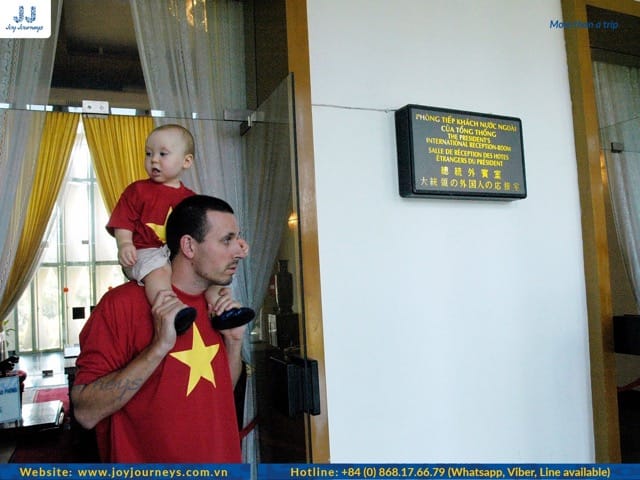
Before visiting Independence Palace, learn about its history, culture, and significance so that you may appreciate the exhibits and comprehend their context.
Follow the rules and regulations of the Palace, including the dress code, photography, and behavior. Some displays may contain sensitive or religious connotations, so be cautious of your behavior.
A guided tour lets you learn more about the castle and its displays while asking questions and receiving professional advice.
To make the most of your visit, check the opening hours, ticket pricing, and any special events or exhibitions beforehand. Bring a water bottle and stay hydrated, especially if the weather is hot.
When approaching sensitive exhibits, be respectful by not touching, leaning on, or otherwise destroying them. Some displays may have unique guidelines or instructions, such as no photography or chatting.
Respect the exhibit and its meaning by following these directions.
If you have any questions regarding an exhibit, please ask a staff member or a tour guide.
Step into History at Saigon Central Post Office.
Conclusion
Independence Palace witnessed the country’s history through colonization, conflict, and political turmoil. The Palace is now a museum, giving tourists an insight into Vietnam’s rich cultural tradition and history. In this article, we have covered the history of the Independence Palace, its roles in the Vietnam War and the fall of Saigon, and its current duties as a historical site and tourist destination.
Visiting the Independence Palace is an opportunity to learn about Vietnam’s rich cultural heritage and history. To make the most of your visit, follow the tips for visitors, approach sensitive exhibits with respect, and take advantage of the opportunities for further learning and education. The Palace’s unique architecture, lush gardens, and significant historical significance make it a must-see destination for all Ho Chi Minh City visitors.


Related Posts
Saigon’s “Flower Market Replica”: Where To Find Them
Ho Chi Minh City’s floral charm is not limited to its bustling wholesale markets. Imagine wandering through a place where vibrant petals, fragrant blooms, and the spirit of traditional Vietnamese markets come alive—without the overwhelming crowds. A flower market replica captures that magic, blending the beauty of fresh flowers with the charm of a curated, […]
Is it Safe to Travel to Vietnam Right Now? A Complete 2025 Guide
Vietnam has emerged as one of Southeast Asia’s most captivating destinations, drawing millions of visitors annually with its rich culture, stunning landscapes, and incredible cuisine. However, many travelers still ask: Is it safe to travel to Vietnam right now? This comprehensive guide provides you with everything you need to know about Vietnam travel safety in […]
Ho Chi Minh Cu Chi Tunnels Tour: The Ultimate Guide
The Cu Chi Tunnels stand as one of Vietnam’s most remarkable historical sites, offering visitors a profound glimpse into the ingenuity and resilience displayed during the Vietnam War. For travelers, a Ho Chi Minh Cu Chi tunnels tour represents an essential experience that combines education, adventure, and deep cultural understanding. This comprehensive guide will help […]